If the only time you consider your ceiling is during a restless night when you can’t sleep, a little respect, please!
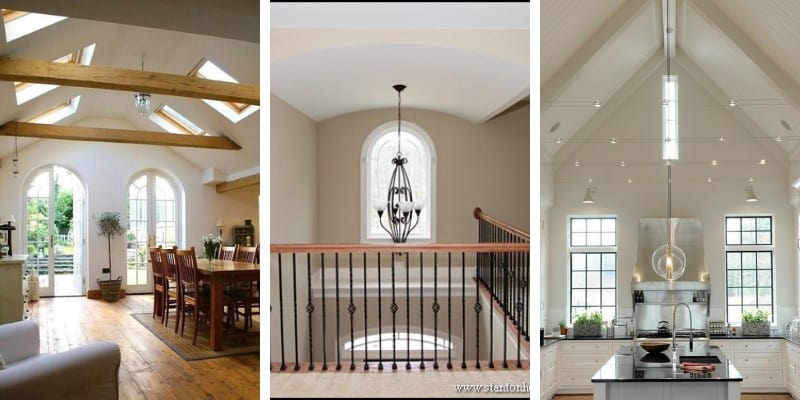
This area of your home represents the last line of defense from outside elements, often providing a uniform surface that hides pipes, conduits, wiring and all manner of workings that literally keep your home functioning.
That said, we introduce a variety of ceilings currently in vogue. Who knew there were so many choices?
Here are 23 different architectural types of ceilings found in homes from around the world (including shapes, materials, textures etc):
1) Normal Conventional Ceiling
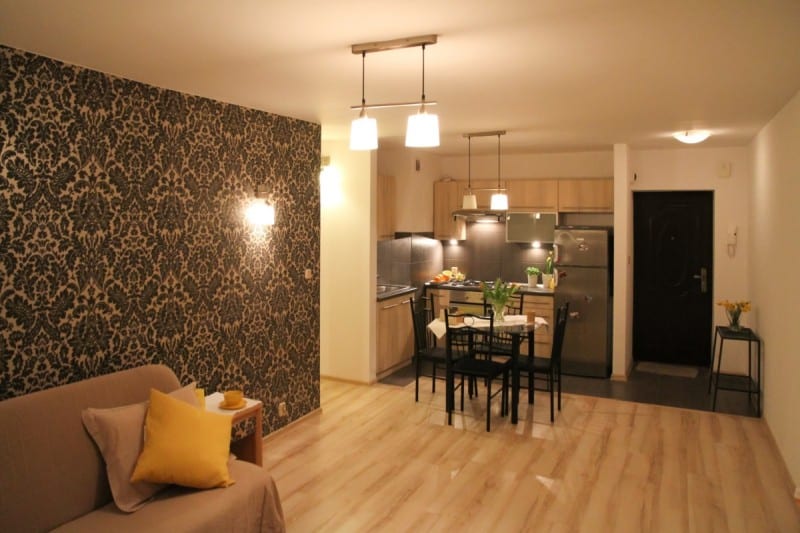
For builders on budgets whose goal is installing a standard, utilitarian ceiling, a conventional ceiling consists of a vertical expanse located 8-feet from the floor and featuring no architectural points of interest that make this type of ceiling a focal point.
Old conventional ceilings were often covered with texturing referred to as “popcorn,” due to its resemblance to the snack, but this finish has fallen out of favor because it tended to collect dirt, offer cleaning and painting challenges and even create an optical illusion that made the room “feel darker.”
2) Vaulted Ceiling

These voluminous expanses also serve as optical illusions, adding vast amounts of space to the smallest of rooms by figuratively “lifting a room up” so it feels substantially larger.
Vaulted ceilings rarely follow the roof line, though they do soar into the air at least 15-feet and feature sloping angles that may or may not be uniform.
Vaulted ceilings often expose rafters. Once the architectural focal point of living and great rooms, vaulted ceilings can currently be found in every room, including bathrooms.
3) Exposed Ceiling
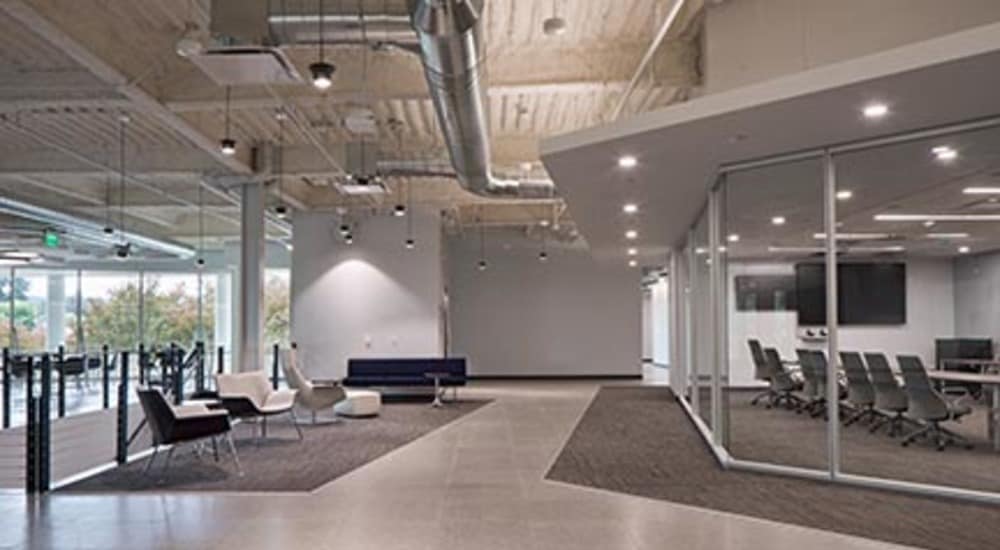
Having decided that you love the “industrial” trend where every pipe, duct work section and maybe even electrical wiring lend a warehouse vibe to any room, you’re exactly the person seeking a home with exposed ceilings.
Renovators love the idea of removing ceilings that dominate a room so old beams, trusses and original architectural elements are exposed.
These ceilings require matching industrial or rustic lighting fixtures to complete the look, but for those seeking a quirky vibe, hanging a classic chandelier in the midst of all of that hardware can turn the ceiling into a work of art.
4) Beam Ceiling
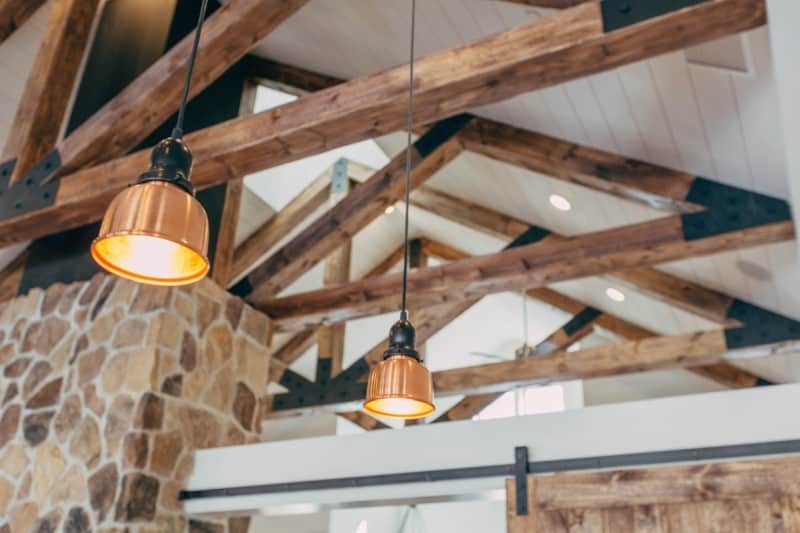
If you like everything about traditional architecture, a home with beam ceilings could find you fixated on those rafters because they’re just so charming.
A trend that has come, gone and is now in vogue again, beam ceilings require enough room to do the style justice.
If beams are low, the room can feel small. Traditionally crafted of wood, new beam designs include metal and more exotic materials.
Versatility is a hallmark of this ceiling: hammer-beam and boxed-beam styles, once considered unique, are back, offering homeowners several choices if they’ve chosen beam ceilings for their abodes.
5) Tin Ceiling
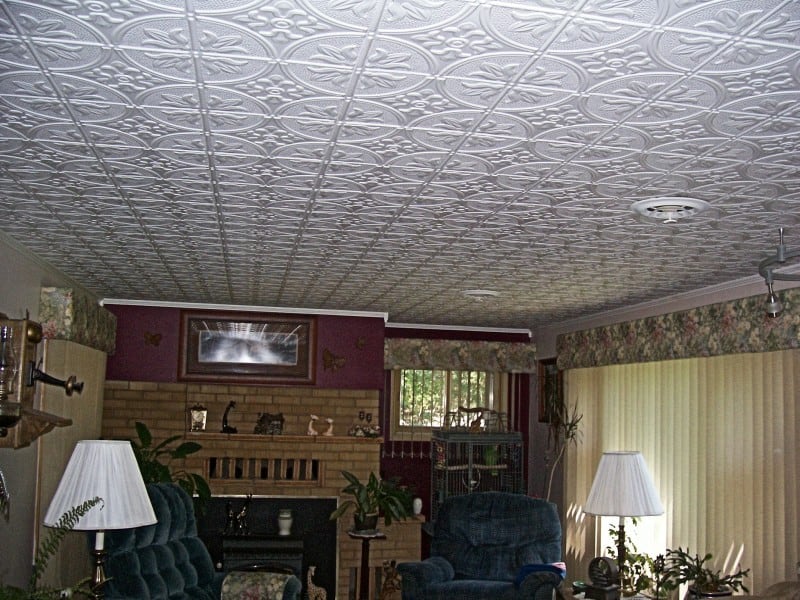
For nostalgia buffs, tin ceilings evoke the past. Originating in the 1880s, these metal expanses were originally made of steel and often hammered into decorative patterns, but it was the safety features that came with tin ceilings that made them so popular.
Back in the day, candles and open-flame cooking could do serious damage to traditional ceilings and leave black soot marks up and down walls. Tin ceilings ended that.
Historians say that tin plating offers another perk: it can keep rust at bay. Today’s tin ceiling isn’t necessarily silver. Colorful metals now mean that a homeowner can enjoy more choices than ever when ordering a tin ceiling.
6) Suspended Ceiling
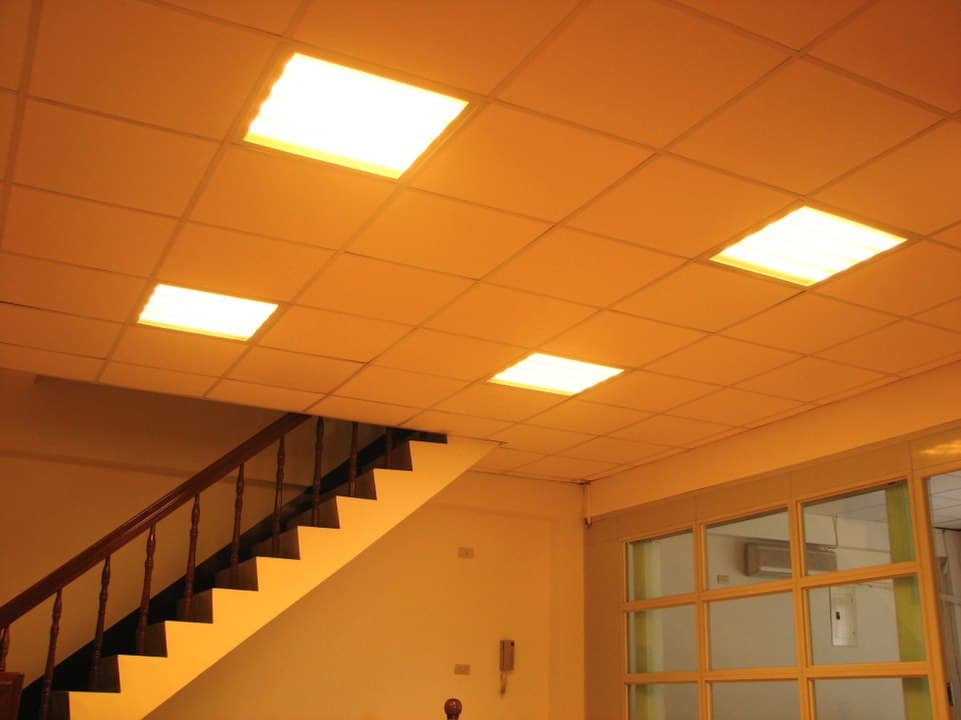
Suspended ceilings are also known as dropped ceilings because they literally drop down in order to obscure anything that a homeowner would prefer not to see when looking up.
This could include cracks, damage, hardware, piping and elements that can’t be removed. Usually composed of a metal grid attached to the ceiling surface by metal wires, suspended ceiling frames hold decorative tiles that are usually crafted of plastic.
The mood of the room can be changed dramatically by substituting tiles made of materials like tin, cork or even fiberglass. Original ceiling height is the determinant of whether or not a dropped ceiling makes sense.
Clearance must be around 6.8-feet from the floor or occupants could wind up feeling closed in or even claustrophobic.
7) Cathedral Ceiling
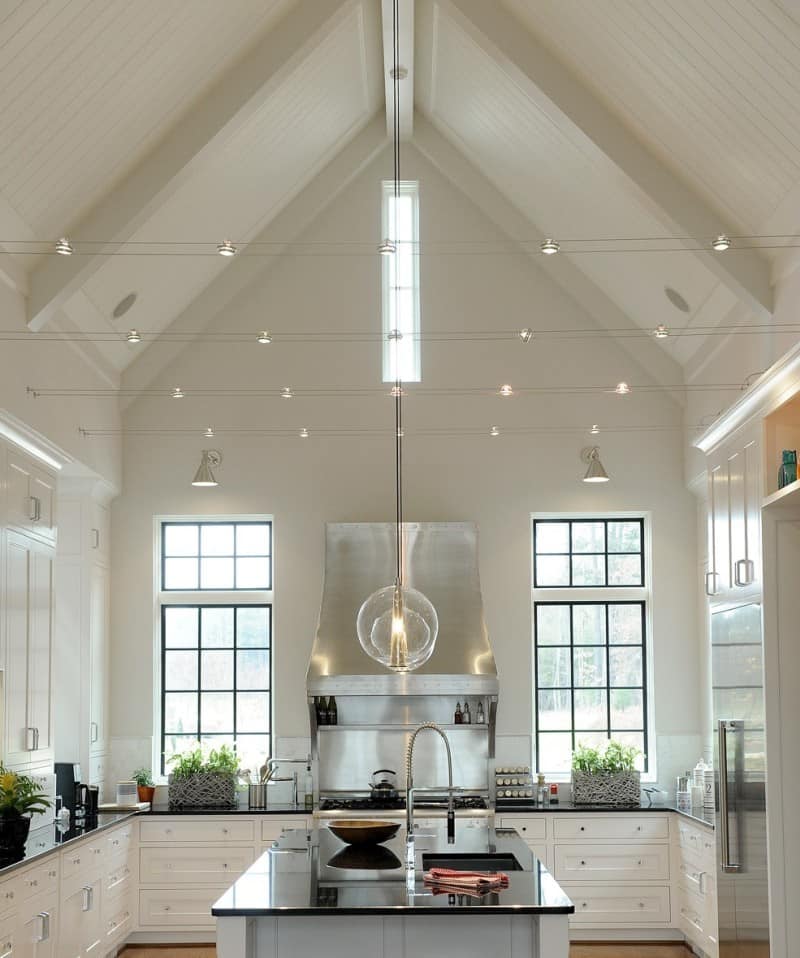
For purists, differentiating a cathedral ceiling from a vaulted ceiling comes down to small details if one is to properly identify either.
In the case of a cathedral ceiling, one distinct characteristic is that the ceiling’s center point is higher than the walls.
Further, sloping sides are uniform and conform to the roof shape so the finished design achieves its design aim.
According to architectural experts, one of the best ways to differentiate the two is by remembering that the secret is in the pitch: while cathedrals have equal sloping sides that lie parallel to the roof pitch, that’s not the case with vaulted cousins that usually have unequal sides of varying shapes.
8) Tray Ceiling
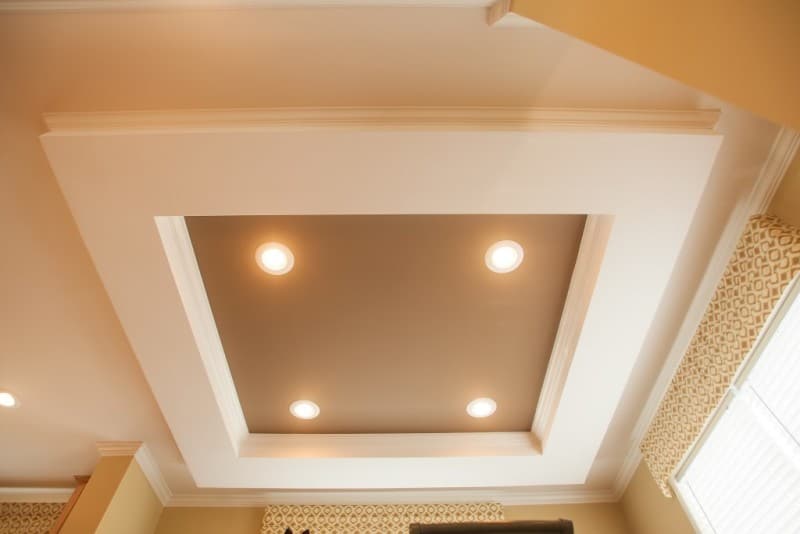
Imagine a serving tray suspended upside down from the ceiling and you understand how this recessed ceiling style got its name. Builders craft a regular ceiling and then a recessed inset is devised that measures at least 6-inches in depth.
The concept of the tray ceiling came about when home builders sought ways to add interest to ceilings that offered the illusion of loftiness. These recessed elements, usually installed in the middle of rooms, are by no means standard these days!
Creatively-shaped trays, the addition of decorative molding and special effects produce one-of-a-kind tray ceilings in rooms that need an imaginative focal point that won’t compete with existing architectural features.
9) Coffered Ceiling
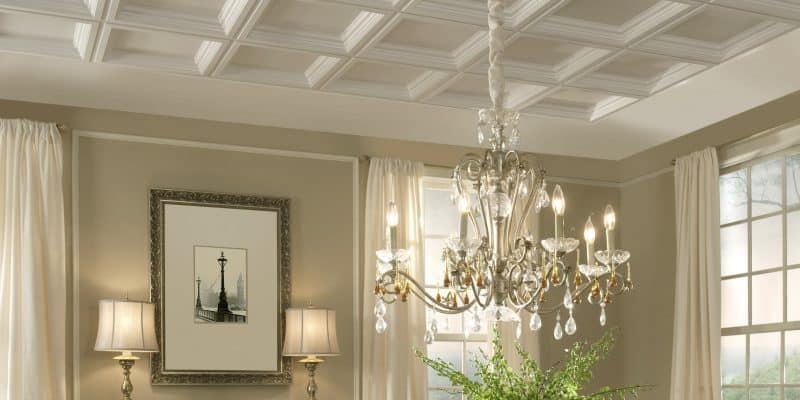
Are you in search of an exotic ceiling that probably won’t be found elsewhere in your neighborhood? Coffered ceilings have been described as tray ceilings on steroids. Rather than one recessed feature, the entire surface is covered with small recessed features separated by grid work.
Ideally suited to rooms with expansive ceiling areas, this style is so ornate, its origins can be traced back to ancient Roman, Chinese and Middle Eastern palaces.
Expect to spend a lot of money if you crave this type of ceiling due to the complexity of the design. Get it right and visitors could be reminded of their visit to Rome’s Pantheon where the main dome is one of the world’s best examples of this majestic ceiling style.
10) Dome Ceiling
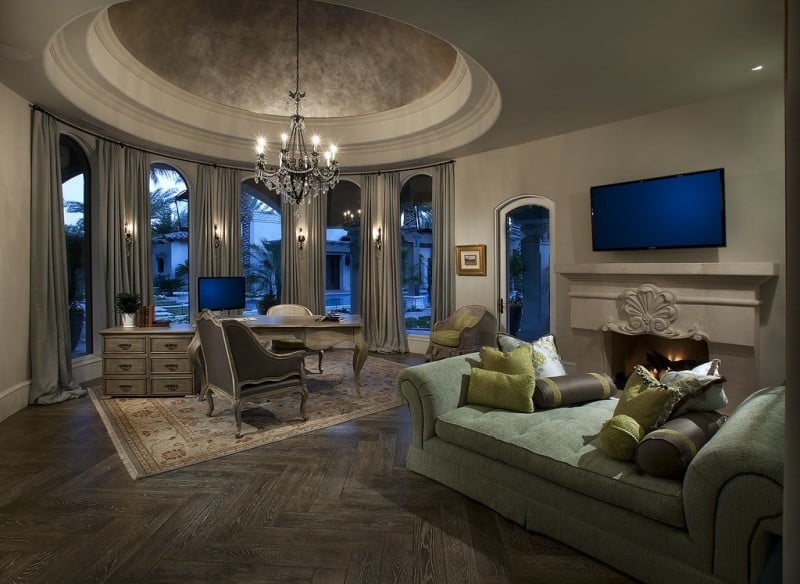
Home designers seeking to make a home’s entry way and narrow halls look more spacious do so by the addition of dome ceilings that create the illusion of expanded height and space.
This ceiling type has the potential to enlarge an area so dramatically, observers say that it can optically double the size of a space, which is exactly why it’s such a popular architectural feature.
Once the domain of gazebos and solariums, dome ceilings are now found throughout homes and may be built in concert with skylights to expand and illuminate small areas even more.
Talk about small but mighty! Domed ceilings decorated with mosaic tiles, murals and dramatic lighting fixtures can be so fanciful, they can become a home’s biggest selling point when it goes on the market.
11) Shed Ceiling
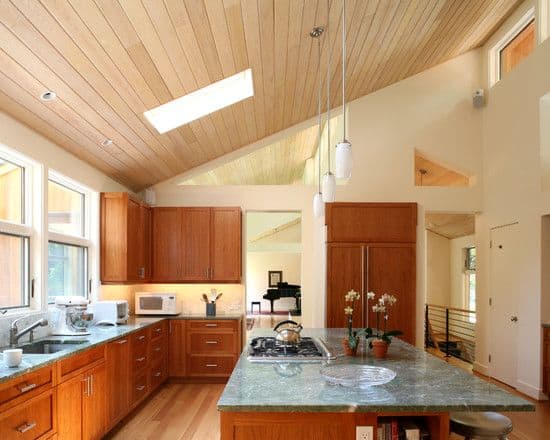
Shed ceilings are another version of the vaulted ceiling but classic angles that define it are only applied to one side of an interior roof configuration.
Commonly found in homes where attics were converted to living spaces, shed ceilings are very practical. They can disguise uneven ceilings and contractors say homeowners can anticipate not just improved ventilation but better insulation.
That stated, shed ceilings are physically very limiting. At the end of the room where the roof almost touches the floor, it could be impossible to sit or stand and there may not be enough height to furnish that end of the room, so this roof style will ask you to sacrifice floor space in the name of those aforementioned benefits.
12) Cove Ceiling
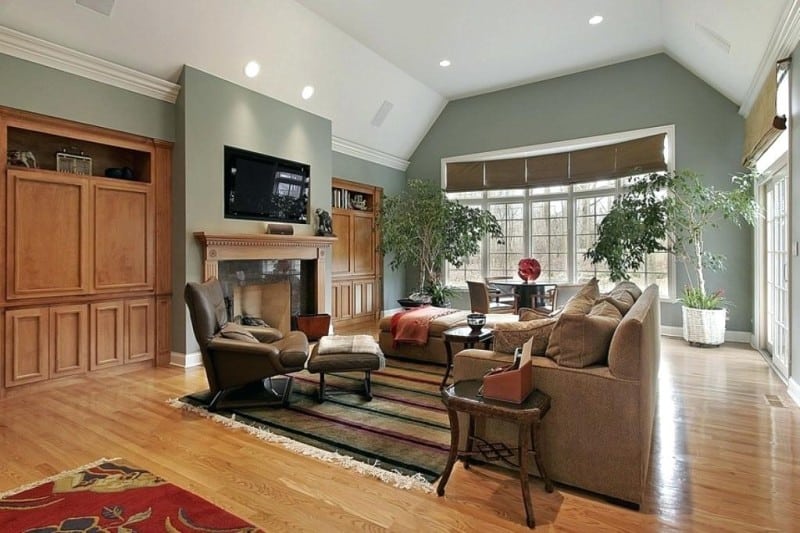
Some tradesmen use the word cove; others insist on “coved.” By either name, this ceiling is easily identified by its rounded, curved framework that joins where ceiling and wall meet.
This ceiling style has a distinctly soft, rounded shape. Need an excuse to install a cove ceiling? If you’re on a deadline to complete construction or you simply don’t like crown molding, cove ceilings look sensational without adding this expensive, time-consuming trim.
Interior decorators recommend painting cove ceilings to match the room’s trim color, and if you install inset ceiling fixtures, you’ll wind up with more dramatic lighting effects that showcase this unique ceiling type.
13) Barrel Vault Ceiling
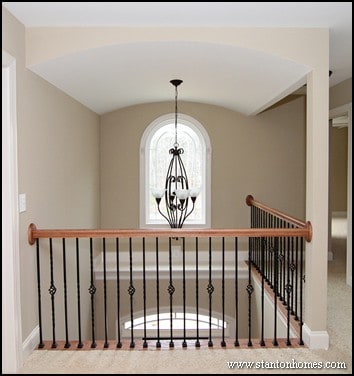
Originating with the Romans, barrel vault ceilings are also referred to as wagon- or tunnel-vaulted ceilings, even though they aren’t steeply pitched.
Squint your eyes and you could swear the silhouette looks just like somebody cut barrels in half and hung them on high.
Happily, these ceiling designs coordinate with just about every interior architectural style: modern, rustic or contemporary, but to take your ceiling one step further, commission a barrel vault ceiling with coffering and you will be guaranteed a unique design that even the neighbors will covet.
14) Tall/High Ceiling
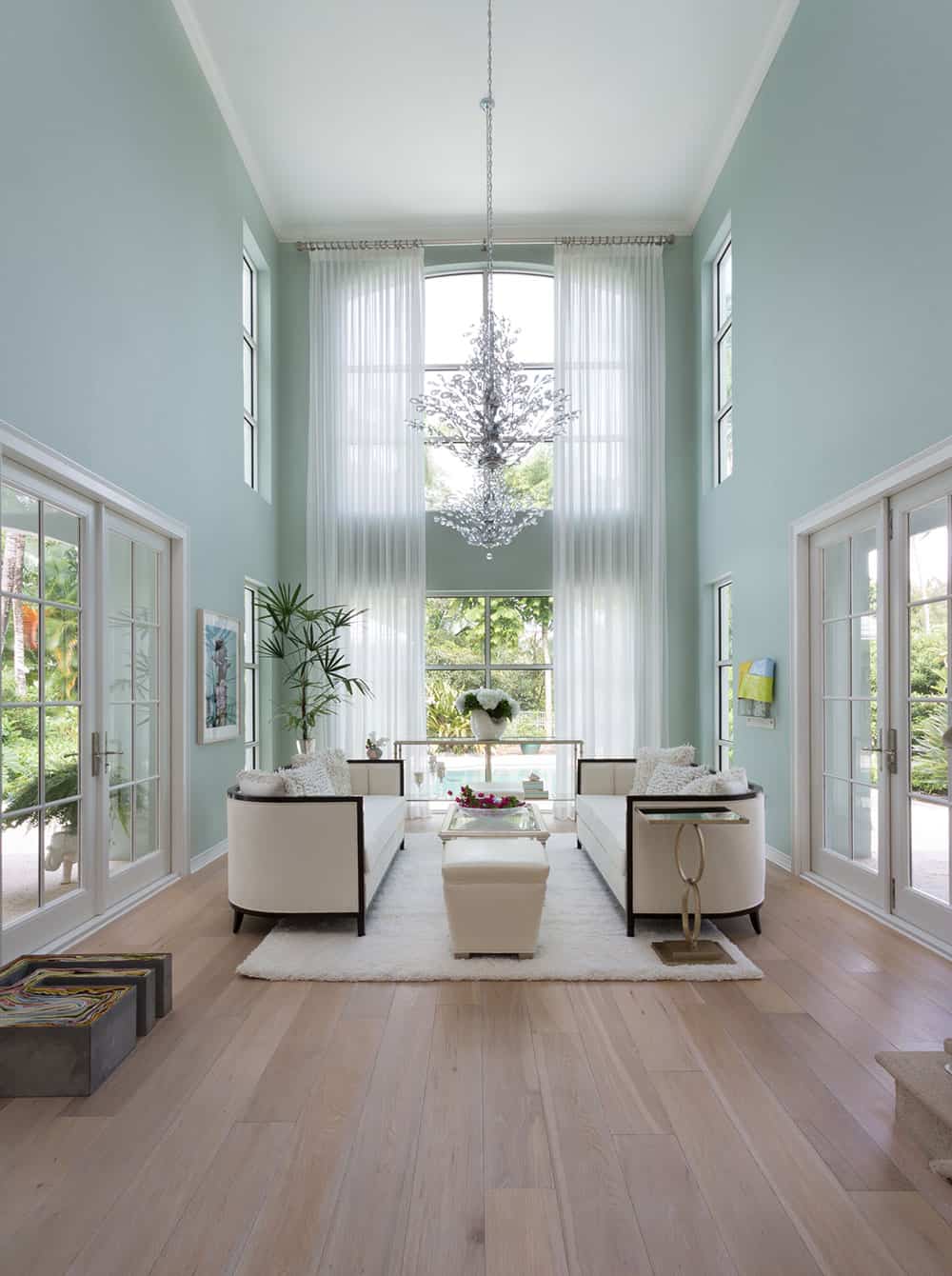
Standard ceilings are usually 8-foot installations but are you aware of the fact that scientific studies prove that the taller the ceiling the more comfortable we feel?
Today’s roofing industry is seeing increased demand for 9-foot and 10-foot expanses. Psychologist Oshin Vartanian’s research at the University of Toronto-Scarborough confirms this phenomenon.
Tall ceilings, says Vartanian, “induce positive feelings,” promote creativity and light up brain cells when test subjects compare photos of rooms with standard, 8-foot ceilings and those with ceilings that measure up to 10-feet. Use this data to convince your contractor that your brain insists on a tall ceiling for obvious reasons.
15) Groin V Ceiling
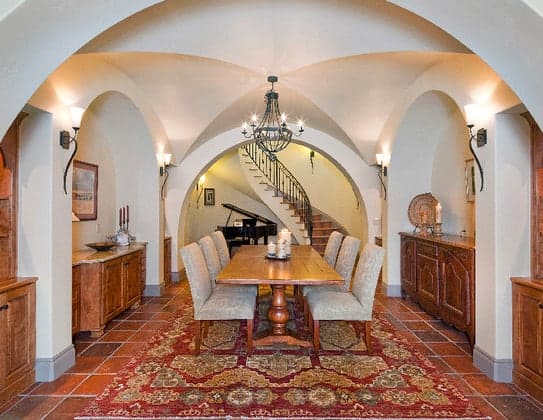
Can you guess what that “V” stands for? If you guessed vault, you’re correct. The Groin V ceiling configuration a hybrid; part traditional vaulted and part barrel vaulted.
Whomever installs this exotic ceiling had better not have flunked higher math because the Groin V ceiling requires a comfortable relationship with right angles.
To explain how this ceiling comes together, the architect stipulates 4 curving circles that are joined at the center. Where those vaults come together, ribs provide not only visual interest but strengthen the ceiling. And you thought math was boring!
Types of Materials for Ceilings
There are several different options in the market for ceiling materials. They all differ in the final look they achieve as well as in price. Here are some of the most popular choices:
16) Plaster
This is the most commonly used material for ceilings. This is because it is highly customizable, cheap, and has an extensive lifespan.

Plaster or plaster of Paris is heavy-duty enough to hide the construction underneath while still giving a smooth finish. POP is also insulated, which is great for both cold and warm weather.
This material is lightweight, yet durable. Since the finish of the material is so smooth, it can be painted to match the design of the room, and it can even be molded according to preference. However, POP is prone to cracking and insect infestation.
17) Wooden or Plywood Ceilings
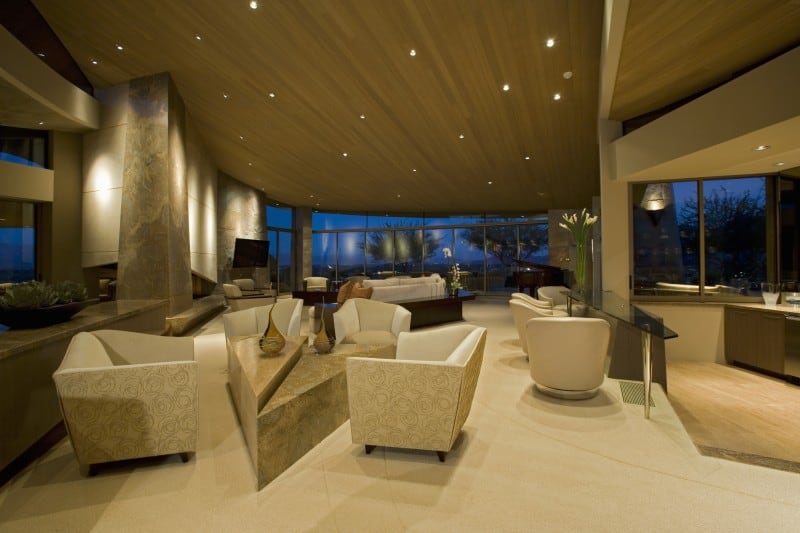
Wooden ceilings give more of a rustic feel to the room. When opting for this material, most people prefer to use beams of wood rather than covering the entire surface. However, when used all over, wood gives the added advantage of being able to be arranged in different designs and patterns to one’s liking.
Plywood is also popular because it is cheaper than solid wood, and it can be finished however desired. Wood ceilings are strong and add a lot of aesthetic value to a room.
However, it does come with its downsides. Wood is susceptible to termites and does not work well in humid climates, and it can also be quite expensive.
18) Gypsum Ceilings
Gypsum is an extremely economical material that is made up of layers of different materials pressed together to form large sheets. These sheets are used to cover the ceiling entirely with a metal frame.
Gypsum is versatile in the sense that the finished product can be painted, covered in wallpaper, or laminated to suit the design of your room.
Gypsum is also available in a number of different finishes and designs. The material itself is reinforced with fiberglass, so it is an insulator, plus it is fire resistant. Gypsum isn’t ideal in humid or damp climates.
19) PVC Ceilings
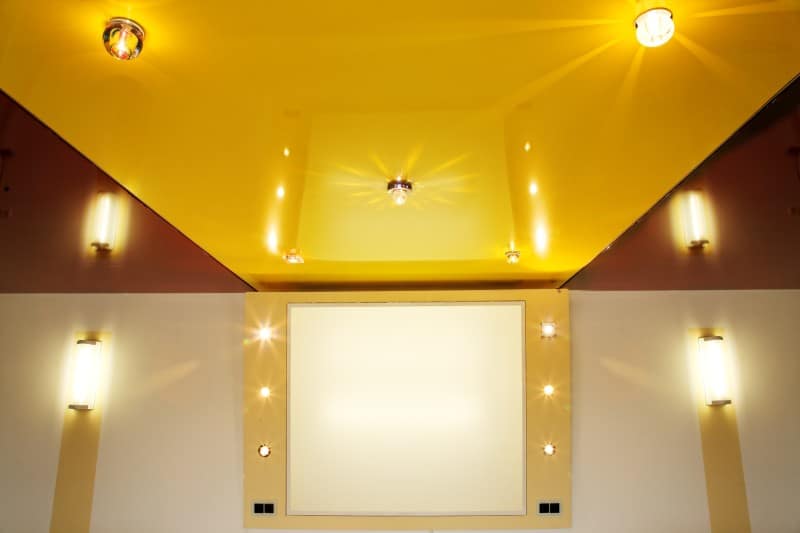
PVC might seem like a strange choice for ceiling material, but it is very beneficial. PVC is a non-porous material, meaning it does not absorb any moisture, so it works well in many weather conditions.
It is also easy to install, durable, and requires little to no maintenance. The material is extremely easy to clean and is not prone to any termites or insect infestations.
PVC can be bought in many different colors to suit your room’s aesthetics, or then it can be painted or polished to achieve a specific look. PVC does not give as great of a look as the rest of the materials on this list.
Types of Ceilings Finishes and Textures
You can opt for several different finishes or looks. This can depend on the material you use or the result you desire. Here are some common finishes:
20) Flat or Smooth Ceilings
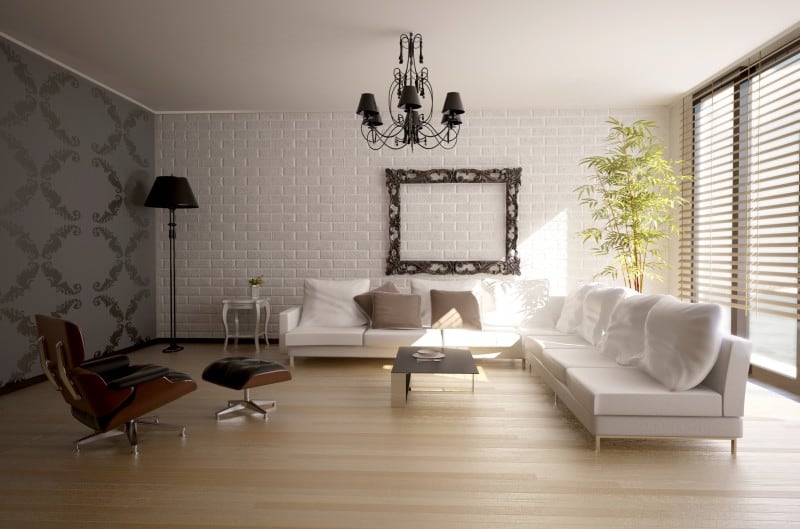
Flat ceilings are the classic look for ceilings. This understated finish is to ensure that the ceiling is not a focal point of the room, rather just a surface to tie the room together. They have a smooth finish, meaning any imperfection in the application process will become prominent.
21) Skip Trowel Ceilings
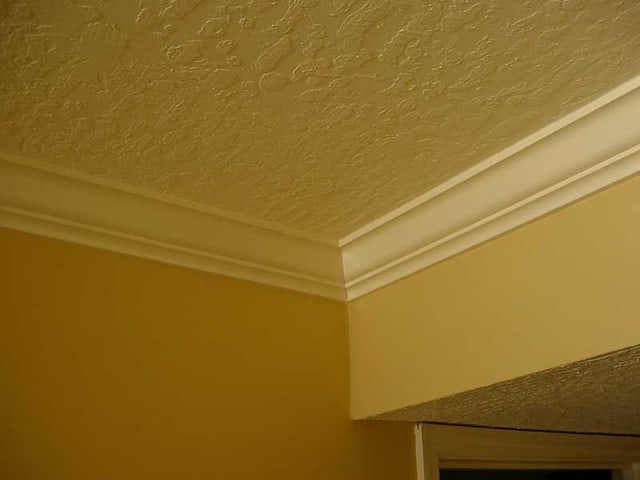
This is a type of textured finish that is applied by hand. It gives the room a Mediterranean-inspired look with the random skips and dips that you see.
The application is made with a coarse joint and sand compound. Usually, this design is seen in higher-end homes that want texture, but don’t want it to be over-the-top.
22) Knockdown Ceilings
This is another textured ceiling that is very similar to the skip trowel ceiling. However, where that texture looks like it is applied by hand, this one looks like more of a purposeful corrosion over time to give an interesting final product.
It is created using a watered-down compound that is sprayed on the ceiling and dried. The texture is knocked into the dried ceiling hence the name.
23) Popcorn Ceiling Texture
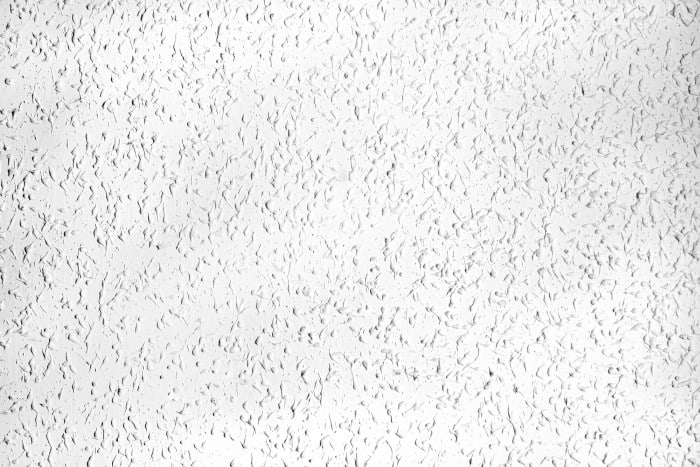
This ceiling texture was extremely popular all the way up to the 90s. Though this aesthetic has lost its charm and many people are trying to rid their homes of it, it was known to be extremely cost-effective and covered any faults the ceiling may have had.
Today, it is very unlikely that you will see this outdated and unappealing design for ceilings.
What Is the Cheapest Ceiling Material?
The cheapest ceiling material by far is PVC tile. For a 200 sq. ft. room, you can get your entire ceiling covered anywhere between $200-$1000 depending on where you get it from and what type you get. The material can be finished to look a lot more expensive than it is, which is why it is a popular choice. Plus, it is very easy to install.
What Type of Ceiling Is Popular?
Ceiling types greatly depend on personal preference, but some types have become more popular with modern designs. Coffered ceilings, striped ceilings, and beam ceilings have all become popular choices along with the simple, conventional ceiling design that stays timeless.
Related Posts
- Comparison of Shiplap vs “Tongue and Groove” vs Beadboard Wall Paneling
- Comparison of Manufactured vs Modular Homes with Pros/Cons
- 10 Different Types of Glass for Home Windows (With Pros and Cons)
- Here Are The Main Pros and Cons of a Barndominium House
- Main Advantages and Disadvantages of Vaulted Ceilings for Homes
- Top 9 Drywall Alternatives for Your Home Ceiling (With Photos)
Great help thank you. I’m buying a home that I know in advance will need updating and remodeling.
Your definitions are clear and easy for the novice to learn from so design choices become easier to choose from.
Good article. I’m a home inspector and it can get a little confusing with cathedral, vs. tray vs. vaulted, etc…
I’m glad you liked it Jesse and thanks for commenting.
Have a nice day
Glenn
According to me, the beam ceiling is perfect option to make your house more attractive and stylish. You can also get the commercial roofing services from us at
Hi
I read your article because I am trying to figure out what the “real” name of the master BR ceiling I have. In your article the picture of “12” (cove) looks like mine but the description says “this ceiling is easily identified by its rounded, framework that joins where ceiling and wall meet.” The pic does not look like the sloped sides are curved nor is my ceiling. My contractor called it a “tray” ceiling but your description and pic of a tray ceiling is absolutely not what I have.
Hi Glenn, We are wanting to re do our ceilings in our house and they are popcorn. What do you recommend to just cover the popcorn up or can that be done? We hate the popcorn !! Please help us !!!
Hi Jennifer,
The first thing to do is to check if your popcorn ceiling does not have asbestos. You can buy a DIY kit to check this or ask a professional to do it for you.
In my opinion the best method is to remove popcorn by scraping. There are various tools that will make the job easier for you.
Glenn
Very informative thanks
I’m glad you liked it John. Have a nice day
Glenn
Well detailed and helpful